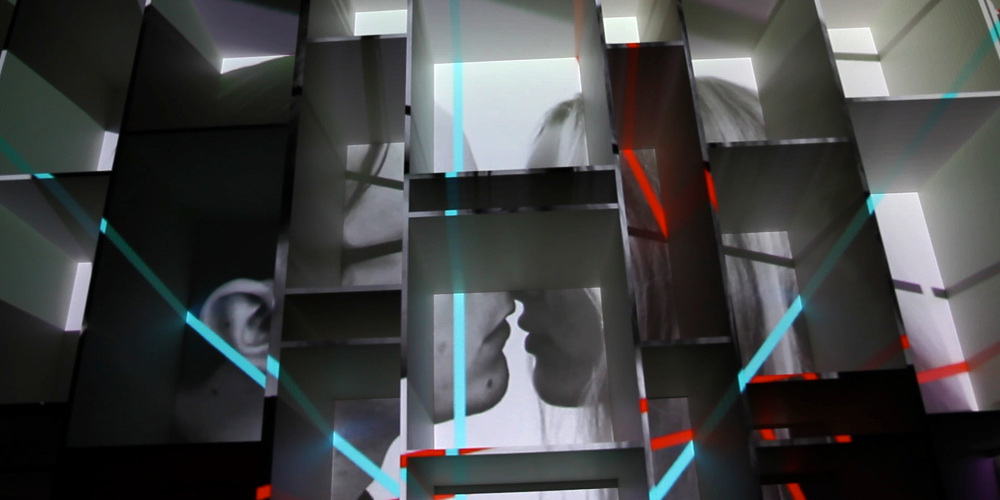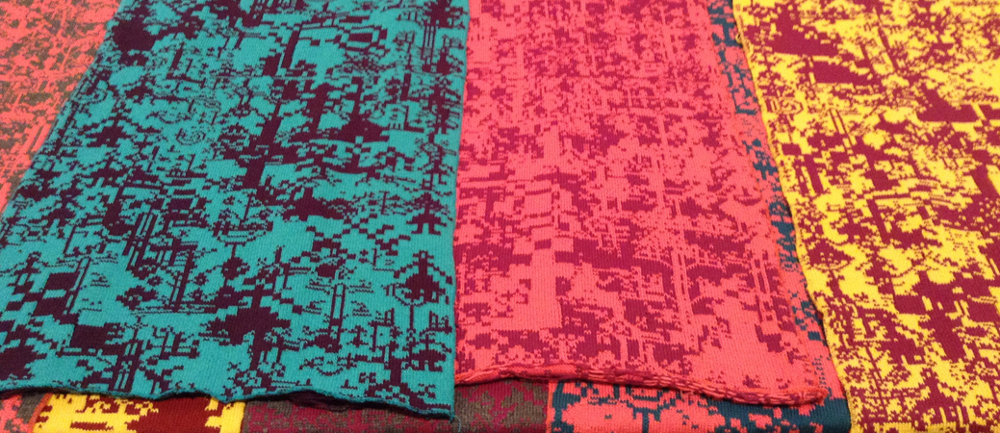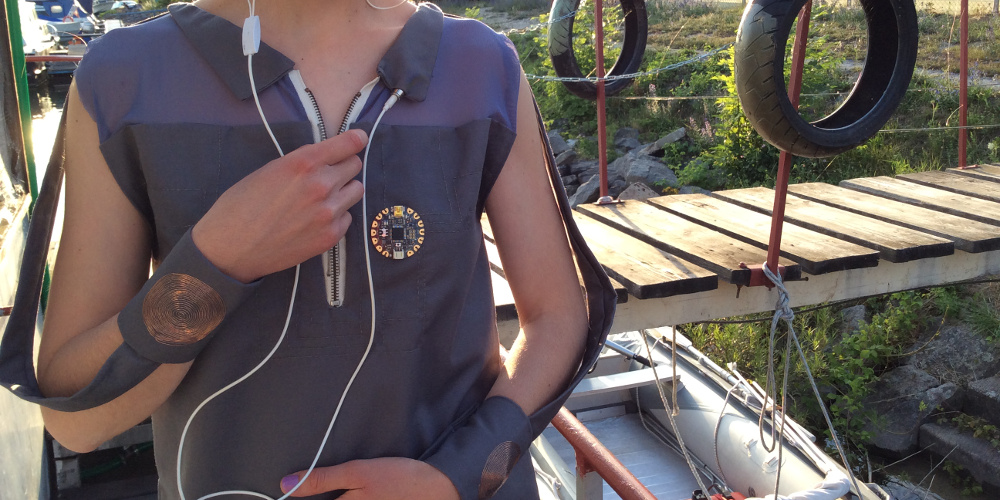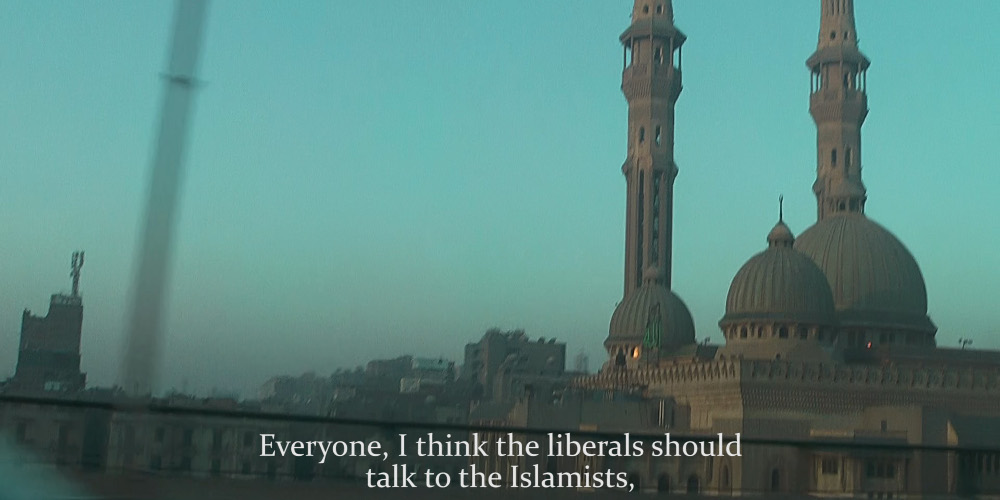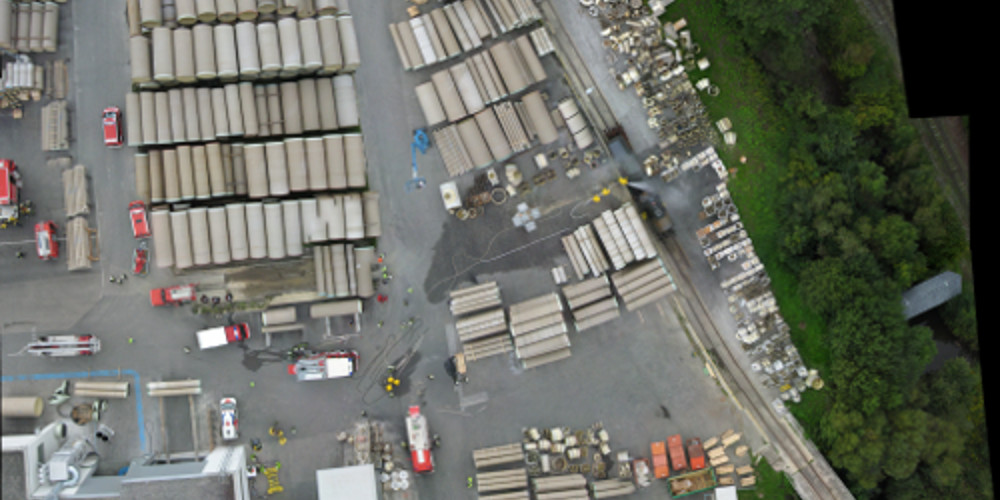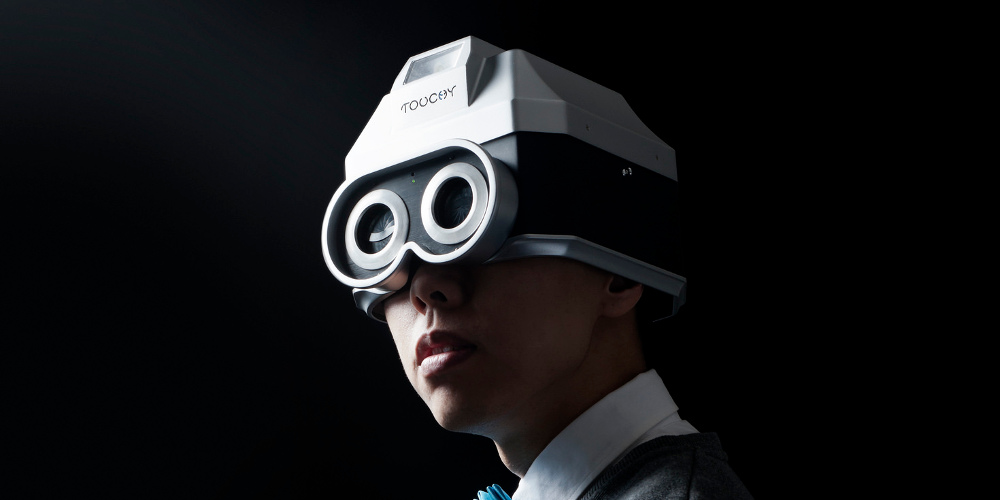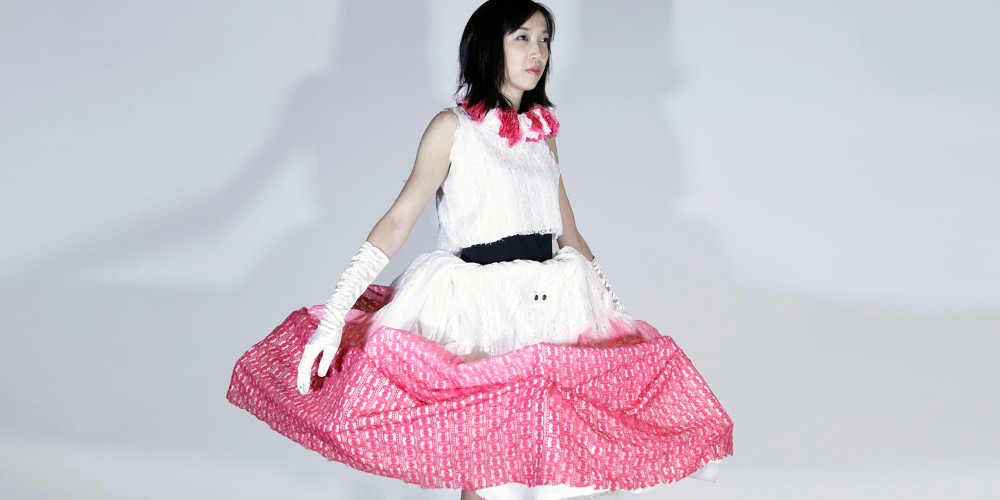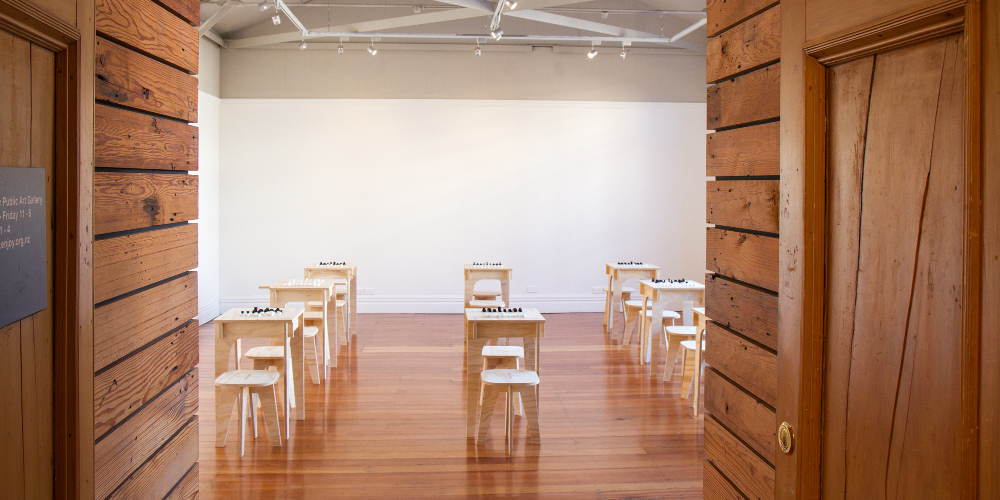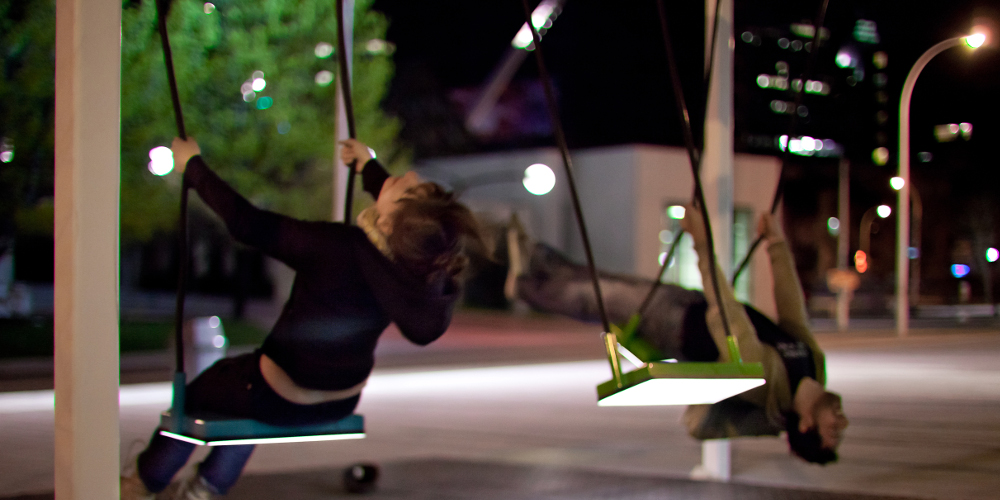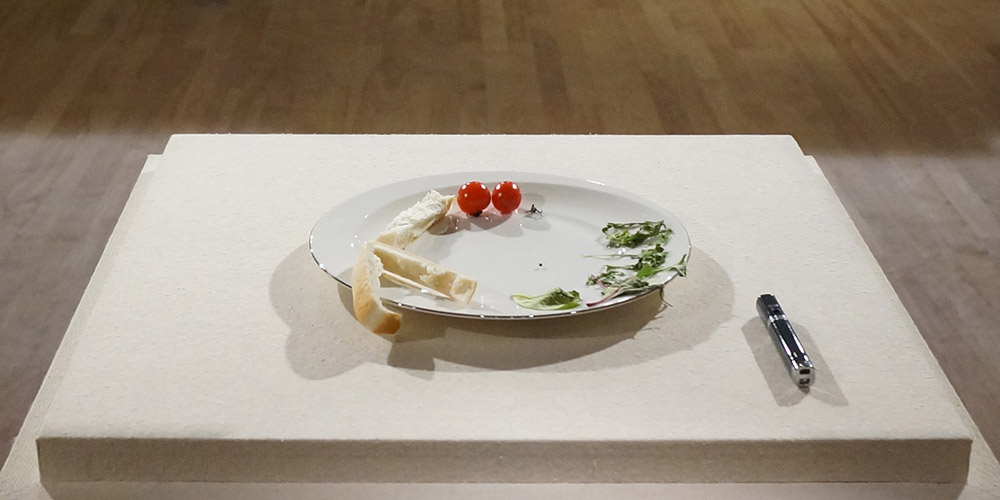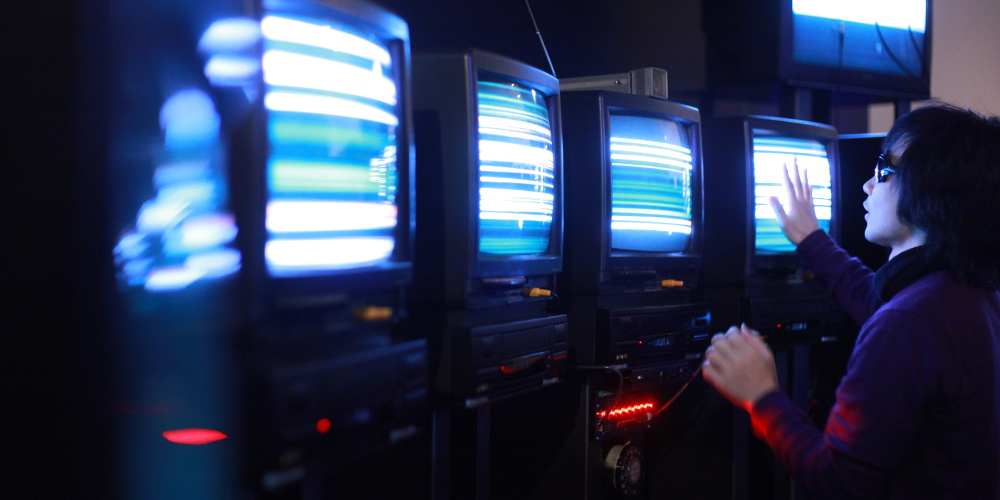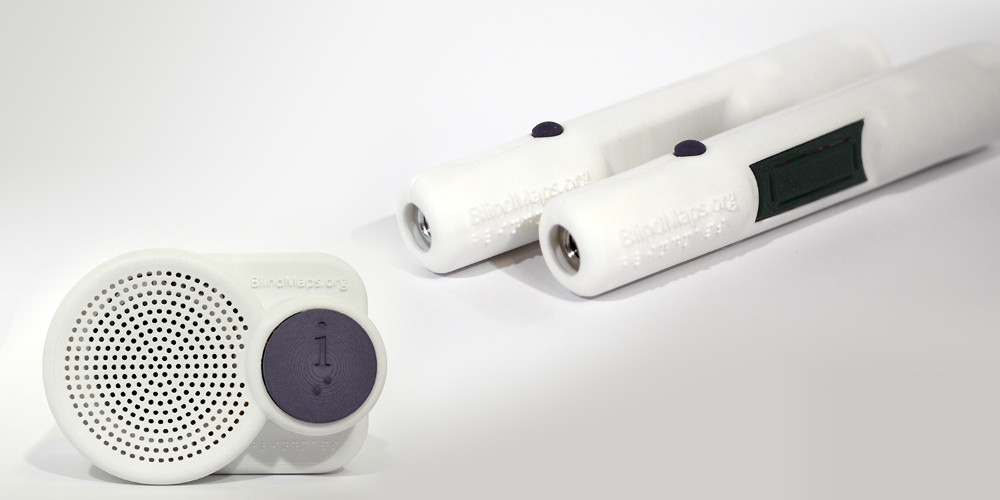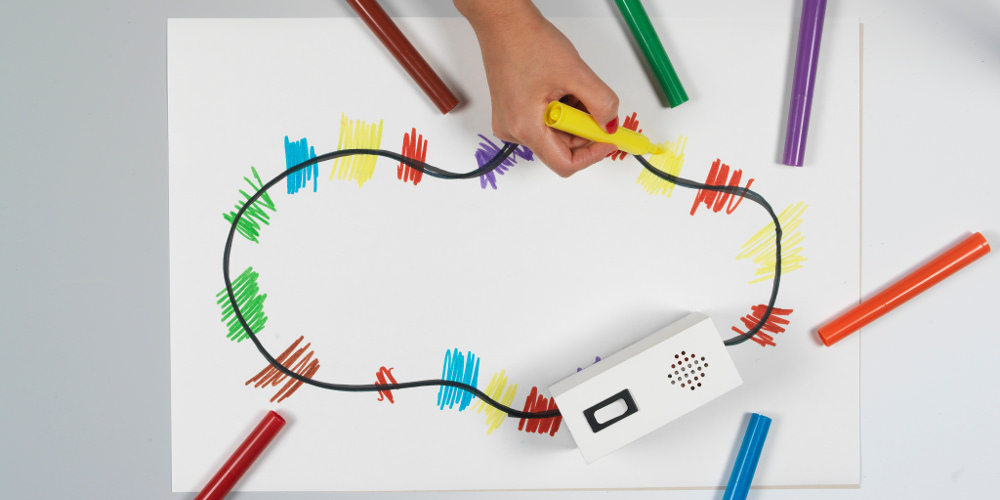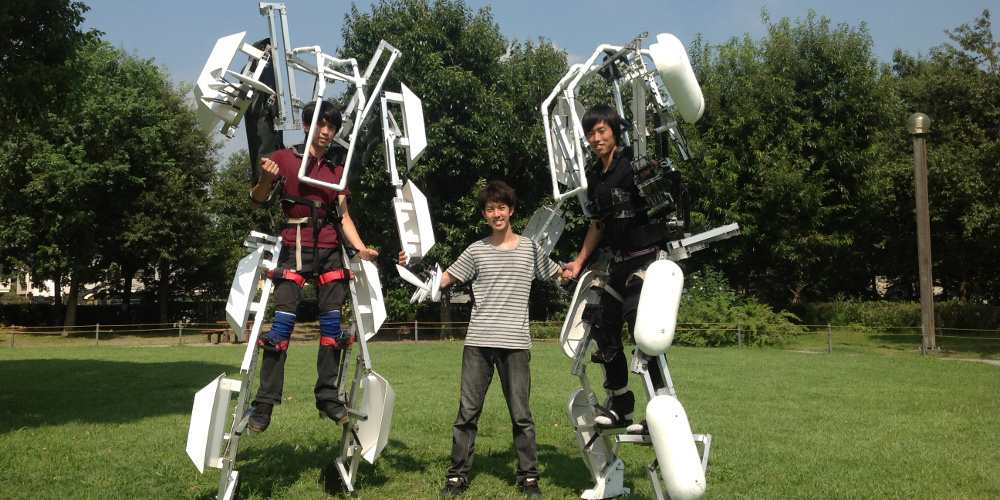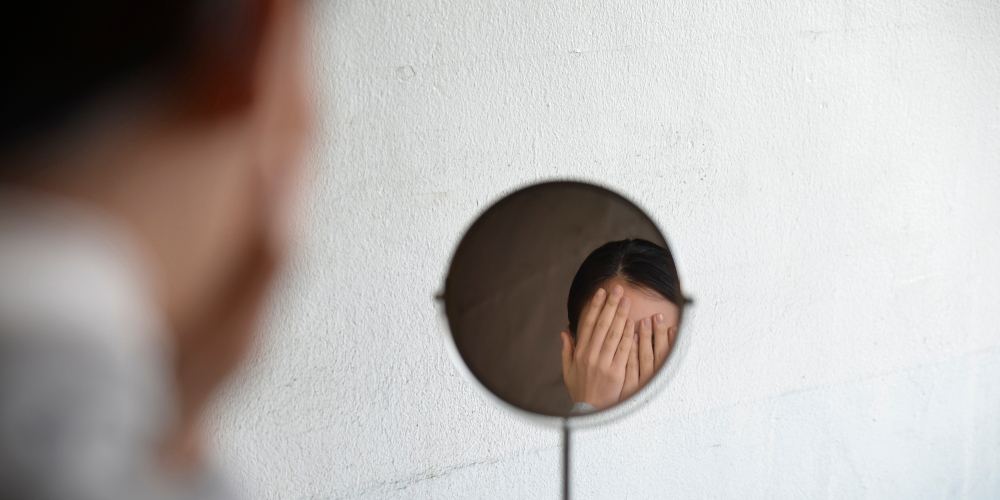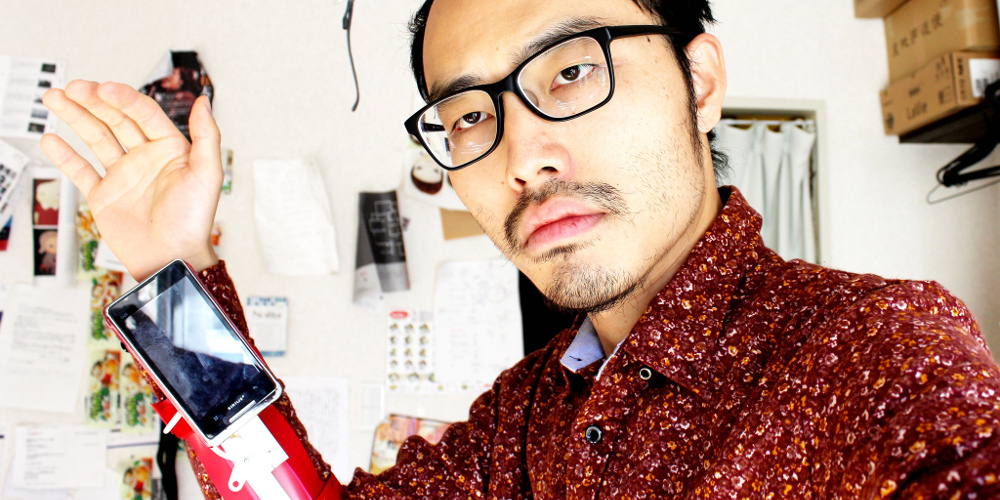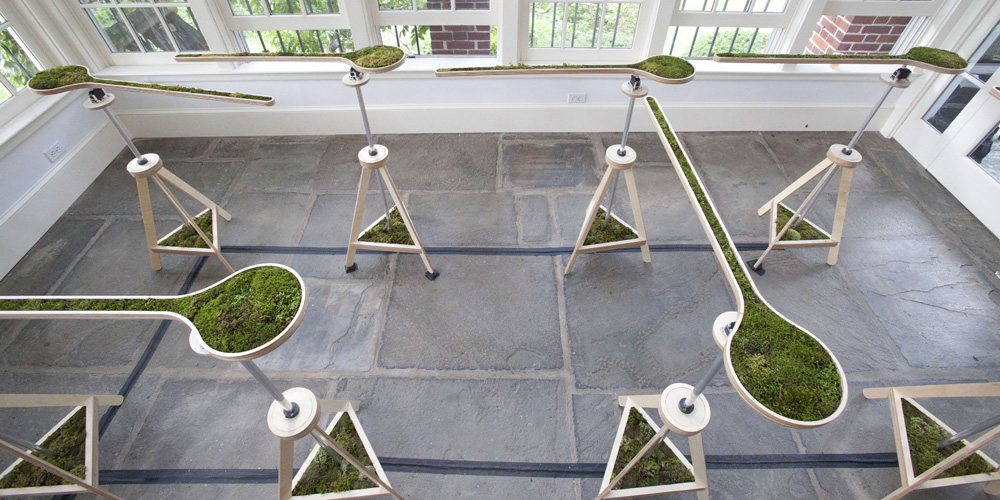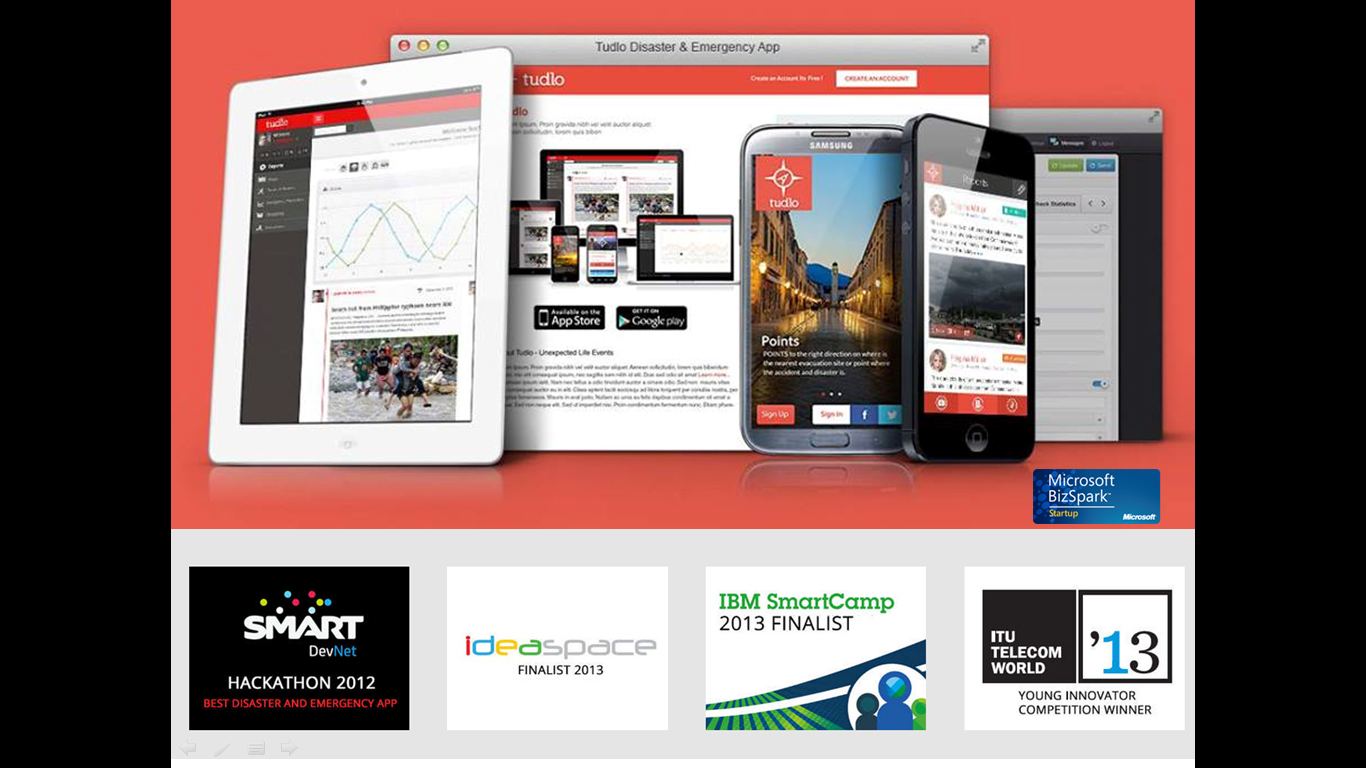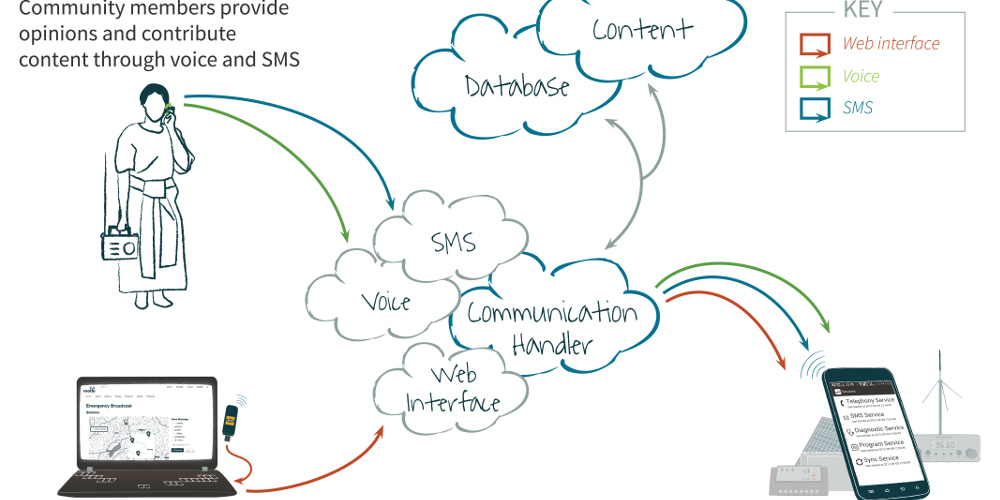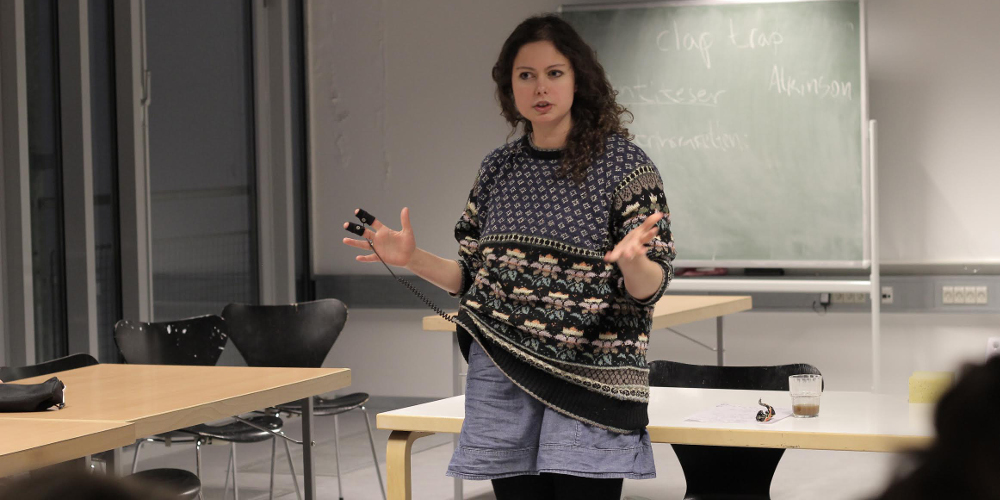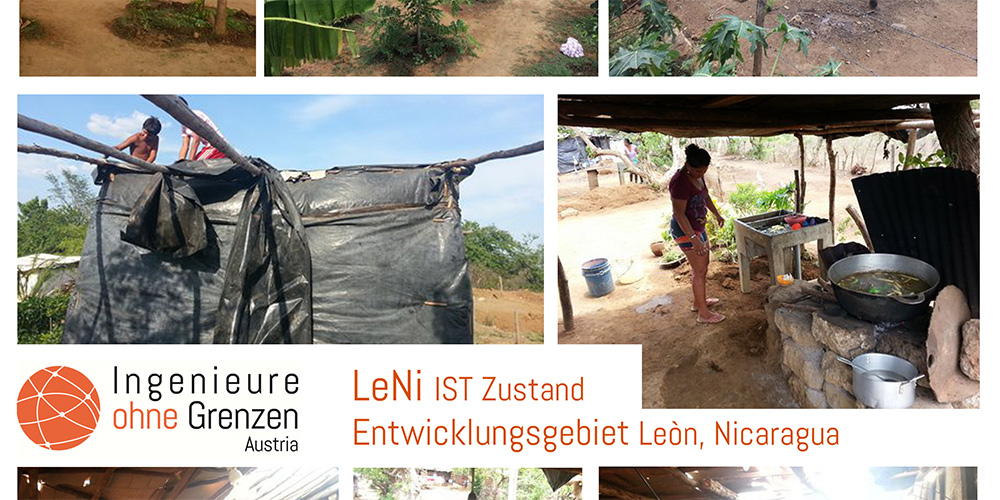THU September 4 - MON September 8 2014, 10 AM - 9 PM
Akademisches Gymnasium, New Building
An exhibition at the Akademisches Gymnasium is dedicated to the works and projects of the Future Innovators Summit.
Lilytronica
Marinos Koutsomichalis (GR), Afroditi Psarra (GR), Maria Varela (GR)
Lilytronica is an interactive project inspired by folk tradition, pop culture and DIY electronics, utilizing hand-made electronic embroidery in the context of experimental sound performance. The work is based on live improvisation through the use of various embroidered synthesizers with microcontrollers, sensors and actuators embedded into fabric. The primitive digital quality of the square-wave sounds, and the fragile and glitch-prone nature of the electronic embroideries, reference the DIY character of e-textile experimentation. The intrinsic aspect of this work is the contradiction created between the “soft” interfaces of the embroidered instruments and the loud and immersive soundscape that they produce.
Oiko-nomic Threads
Afroditi Psarra (GR)
Oiko-nomic Threads is an interactive system commenting on the notion of work through the production of a knitted textile. By rethinking and redefining the functionality of an obsolete knitting machine and rendering it part of a new system, the creation of a generative textile is made possible. Its decoration emerges from the data visualization of the Manpower Employment Offices databases, using selected patterns originally from Greek folk art. The system is presented through an interactive installation that refers to the production methodology and creates conditions in which the knitting process remains accessible and contemporary. Thus, the knitted textile as a product becomes an active record of archival resources.
Credits: Daphne Dragona, Daphne Vitali, Tina Pandi (Curators), National Museum of Contemporary Art of Athens (EMST) and National Documentation Centre of Greece (EKT), Sandra Naumann (Curator), Transmediale 14, Goethe Institute, Katerina Gregos (Curator), Bozar Museum of Contemporary Art in Brussels
Divergence
Afroditi Psarra (GR)
Divergence is an e-textiles project inspired by sci-fi aesthetics and real physics and questions the way we perceive our surroundings. In particular, it deals with the question of how to create physicality in order to demonstrate and sense the invisible forces that surround us. For that reason, this project proposes the creation of a wearable Electromagnetic Field detector that provides the human body with the ability to feel and hear the electrically and magnetically charged particles that propagate around us in the form of waves. The wearable consists of a soft-circuitry garment with an embedded microcontroller that provides haptic and sonic feedback of the electromagnetic sources that surround us.
Credits: Divergence forms part of The Soft, The Hard and The Wet summer residency in Linz curated by Shulea Cheang and organised by Stadtwerkstatt.
Showreel
Harald Haraldsson (IS)
Harald Haraldsson is a visual artist and computer engineer with output ranging from interactive installations to television commercials and music videos. Haraldsson is the founder of Wonwei, a creative technology firm providing services and advisory to the advertising industry, as well as engaging in the production of media art works and product design. He garnered numerous articles and profiles in publications such as The Verge, CNET, designboom, The Creators Project, Dezeen, Co.Design, Rhizome, The Next Web and more. At the Future Innovation Summit the artist is represented by Showreel, a video compilation of Haraldsson`s most interesting works.
state of revolution
Agnes Aistleitner (AT)
In the 14-minute video clip entitled state of revolution, Agnes Aistleitner seeks traces of the beginning upheavals in Egypt in 2011. As an outsider on site, she attempts to consider what transpired, gathering accounts and opinions from people on the streets and in marketplaces. In January 2012, the 19-year-old woman also staged a roundtable discussion at the Austrian Cultural Forum in Cairo attended by an employee of the Austrian embassy to Egypt, an Egyptian political scientist and students at the American University in Cairo. The topic: What can the West do for the revolution?
Self Organizing Intelligent Network of UAVs (SINUS) Projects
Samira Hayat, Jürgen Scherer, Saeed Yahyanejad, Evsen Yanmaz
The Self Organizing Intelligent Network of UAVs (SINUS) Projects focuses on the formation of a reliable and robust aerial network for disaster scenarios. The work aims to develop a distributed coordination system for MultiUAV movement and task execution, along with an aerial network for robust multimedia streaming. The final goal is the integration of these components for online victim detection in disaster situations. Real-world experiments are performed to validate the network design.
Touchy
Eric Siu (HK)
Touchy is a human camera—a wearable device that literally transforms a human being into a functioning camera. The wearer is constantly “blinded” unless someone touches his resp. her skin that causes the shutters to open and restores the wearer’s vision. When physical contact is held for 10 seconds, the camera takes a “touch-snap”, which is displayed on the device’s LCD.
Since September 2012, the artist has become part of the experiment, and has experienced personal transformation after thousands of touchsnaps.
The Mi.Mu Gloves
Kelly Snook (UK)
Mi.Mu is a non-profit startup comprising a highly skilled team of musicians, artists, scientists and technologists developing cutting-edge wearable technology for the performance and composition of music. The musical glove system represents a truly elegant fusion of traditional textiles with advanced motion tracking electronics and algorithms. Combined with dedicated gesture detection and mapping software, the Mi.Mu gloves offer a new and flexible approach to the control of music and visuals with intuitive human movement. Users experience a dramatic shift in their perceptions of music performance and composition as the technology fades away and what used to be a barrier to entry becomes an enabler of creative freedom.
UrbanArmor
Kathleen McDermott (US/HK)
Urban Armor is a collection of DIY wearable electronics that help women exercise control over their personal and public space. An accompanying website provides free instructions and code to make the pieces. Up until now Urban Armor consists of three projects:
The Personal Space Dress is a dress that uses an ultrasonic sensor to detect when someone, or something, is too close to it. Then, it uses continuous rotation servo motors to expand the dress and protect your personal space. The AutoFilter is a robotic scarf that responds to pollution data by covering the face of the wearer. And Miss-My-Face is a hat and veil lined with infrared lights that help protect your identity from CCTV footage. The device can be turned on directly with a button, or you can use a CCTV detector to turn the lights on automatically, when CCTV is detected.
Broad Street Maps
Anna Clements (US), Hannah Judge (US)
Broad Street Maps creates maps for public health organizations because Judge and Clements believe in the power of visual data to inform decisions and communicate impact. They turn static spreadsheets into dynamic maps in order to better understand the social and geographic determinants of health, and ultimately improve the delivery of care. Because both young women are committed to partnering with organizations that champion sustainable and community-based solutions, they are focused on harnessing open source tools and designing products not only for annual reports and boardrooms, but also for the local health worker in the field.
Orthogonal/Diagonal
Nova Jiang (NZ)
In Orthogonal/Diagonal regional variants of chess found in Asia and elsewhere are functioning as seeds for digitally generating 3D printed playable games. Unlike Western chess, many of these Asian games are little known outside their region. Treating each chess variant as a unique iteration of the same ancient system, Nova Jiang reimagines the games as sculptural ensembles of related forms. Interested in both redesigning the surface of these games and engaging with their underlying systems, Jiang presents eight games for visitors to play.
Daily tous les jours
Melissa Mongiat (CA), Mouna Andraos (CA)
Daily tous les jours is an interaction design studio with a focus on participation – empowering people to have a place in the stories that are told around them. Their main focus is to create collective experiences and to research new ways to interact and tell stories. Daily tous les jours designs large scale projects that impact cities down to tiny ones that fit within a pocket. The projects bring magic to everyday places, behaviours and objects, inviting the public to become active contributors in the process and the outcome. These experiences take on many different shapes: urban interventions and planning, exhibitions, products, spatial design, events, software applications, and film.
Lapillus Bug
Kono Michinari (JP), Takayuki Hoshi (JP), Yasuaki Kakehi (JP)
Lapillus Bug is an atomic creature that hovers over a breakfast plate. An inorganic particle is trapped in mid-air by ultrasonic sound waves. This bug, which looks a bit like a fruit fly, flies about quivering. The bug also likes to play with humans and displays various types of behavior, reacting to illuminated lights and to objects placed on the plate. Focused 40kHz ultrasonic waves are produced from an ultrasonic phased array that is settled above the table. Polystyrene grains are trapped in the nodes of the standing waves caused by the ultrasonic waves, which enables them to stay in mid-air. This method is based on a phenomenon known as acoustic levitation. This work aims to extract and express creature-like behavior from inanimate objects by using external force. Computer-controlled movements and accidental movements caused by the physical matter express creature-like behavior. Emerging technologies help to visually recognize and represent the hidden and involved spiritual features of matter.
Braun Tube Jazz Band
Ei Wada (JP)
It all began with a very fruitful mistake: Japanese artist/musician Ei Wada mistakenly connected a sound cable to a video port and thereby transformed sound into an image. Wada proceeded to take advantage of the fortuitous happenstance by recording the image with a camera and playing it back as an audio signal. This is now the technique used by Wada’s Braun Tube Jazz Band, an ensemble made up of old Braun cathode ray tube TV sets that the maestro has connected to video recorders that are, in turn, hooked up to a PC. He strikes up his Jazz Band by slapping the screens of the various TV sets. The astounding result is a powerful archaic-electronic sound reminiscent of a theremin.
BlindMaps
Markus Schmeiduch (AT), Andrew Spitz (FR), Ruben van der Vleuten (NL)
BlindMaps is an R&D project that aims to come up with navigation aids to make it easier and safer for blind people to get around in cities they’re unfamiliar with. The approach: not a system providing verbal output, but rather one that uses a Braille-script-type touchscreen supported by popular online maps and the capabilities of a smartphone.
Schmeiduch, Spitz and van der Vleuten are this year’s recipients of [the next idea] voestalpine Art and Technology Grant to enable them to further develop this promising approach during a three-month residency at the Ars Electronica Futurelab.
Looks Like Music
Yuri Suzuki (JP)
Looks Like Music is an installation centered around Yuri Suzuki’s sound piece Colour Chaser, in which a miniature robot detects and follows a black line. When it crosses colored lines it translates this data into sound. Visitors can draw on paper and simultaneously compose music, thus helping to create a large-scale picture and a sound piece at the same time.
Production: Yuri Suzuki, Mark McKeague, Joseph Pleass
Programming: Mark McKeague
Design Assistance: Joseph Pleass
PCB Development: Stefan Dzisiewski-Smith
Skeletonics
Reyes Tatsuru Shiroku (JP), Tomohiro Aka (JP), Keiju Nakano (JP)
This work is a movement magnification suit, using link mechanisms that work in tandem with arm and leg actions, amplifying the motions of the wearer’s four limbs, and realizing dynamic arm and leg movements that ordinarily cannot be expressed by the human body. The suit is entirely powered by the wearer and has no actuator (a mechanism for converting energy into physical movement), with the load on the wearer in proportion to the enlargement rate of the mass of the suit.
Nonfacial Mirror
Shinseungback Kimyonghun (Featured Artist/ KR)
The mirror avoids faces. One can look at his/her face in the mirror only when it’s a nonface.
iPhone Quick-Draw System
Shota Mori (JP)
Draw! The iPhone Quick-Draw System that the Japan Media Arts Festival is presenting in the Future Innovators Exhibit will add a whiff of the Wild West to the high-gloss world of modern media. Inspired by the ingenious pistol delivery contraption used by Robert De Niro’s unforgettable character in Taxi Driver, Mori’s system is a holster that instantaneously slides an iPhone out of your sleeve and into your hand. This is a spectacular gesture that’s made a big splash, thanks to the object itself as well as the accompanying video.
Landscape Abbreviated
Nova Jiang (NZ), Terrace
Nova Jiang is interested in the way that simple interventions can make the experience of space dynamic and unpredictable. And he’s also fascinated by the idea of a labyrinth, a phenomenon that has left behind traces not only in architecture but in literature, software programming, game playing and landscape gardening as well. Landscape Abbreviated is a kinetic labyrinth conceived by Jiang as an architectural abbreviation of some of these grand ideas. Any visitor going through this installation can enjoy a potentially unique experience. The setup consists of modular elements on top of which are rotating planters containing live moss collected from the sides of buildings, cracks in the pavement and subway grates in New York City. The planters are controlled by a computer program that continuously generates new maze patterns; they rotate to form shifting pathways that encourage visitors to change direction and viewpoints as they move through the space.
Tudlo App
Yvonne Loremia (PH)
UrbanArmor
Kathleen McDermott (US/HK)
Excalibur
Ivan Klimek (SK)
RootIO
Jude Mukundane (UG)
Gradberry
Syed Ahmed (PK)
Momentum
Angela Oguntala (US)
Youth Ki Awaaz
Anshul Tewari (IN)
Collective Music Experiment
Fermín Serrano Sanz (ES)
FoodRing
Oscar Ekponimo (NG)
IdeaLab@CERN
Tuuli Utriainen (FI)
LeNi
Ingenieure ohne Grenzen (AT)
The mission of a project named LeNi – an acronym of Leòn, Nicaragua – is to construct housing fit for human beings to accommodate single mothers and their children in the slums of Leòn. Their current quarters made of logs and plastic tarps provide hardly any protection during the rainy season. Cooking, toilet and bathing facilities are usually under a makeshift roof outdoors. Members of the Engineers Without Borders’ local organization in the Austrian Province of Styria created three prototypes of a house to be built using locally available materials and to eventually go into mass production in Leòn. They’ll provide 20,000 people with a roof over their head and enable them to benefit from sustainable energy & water supplies.
Alle Informationen zum Future Innovators Summit, der von 4. bis 7.9.2014 in Linz stattfindet, finden Sie auf ars.electronica.art/c/future-innovators-summit!

